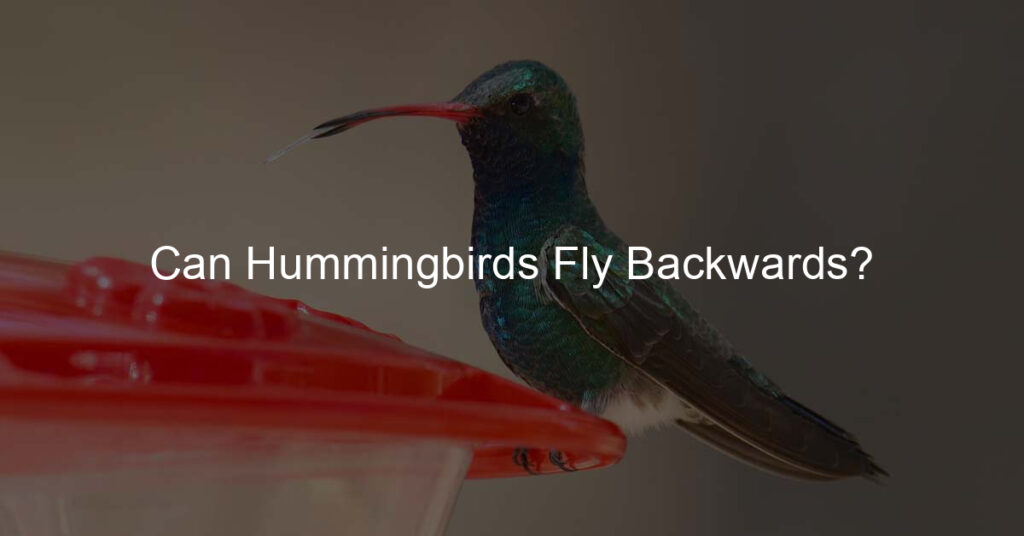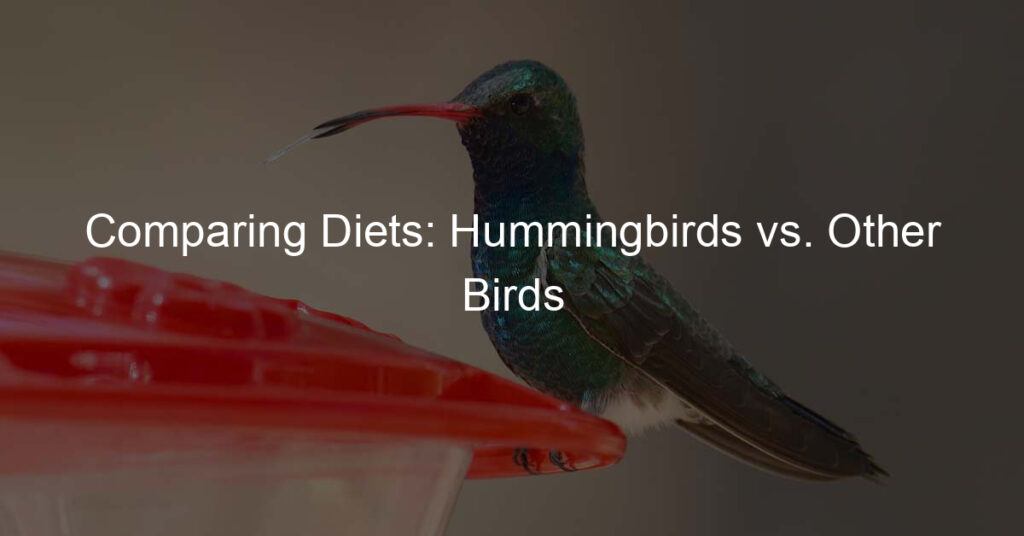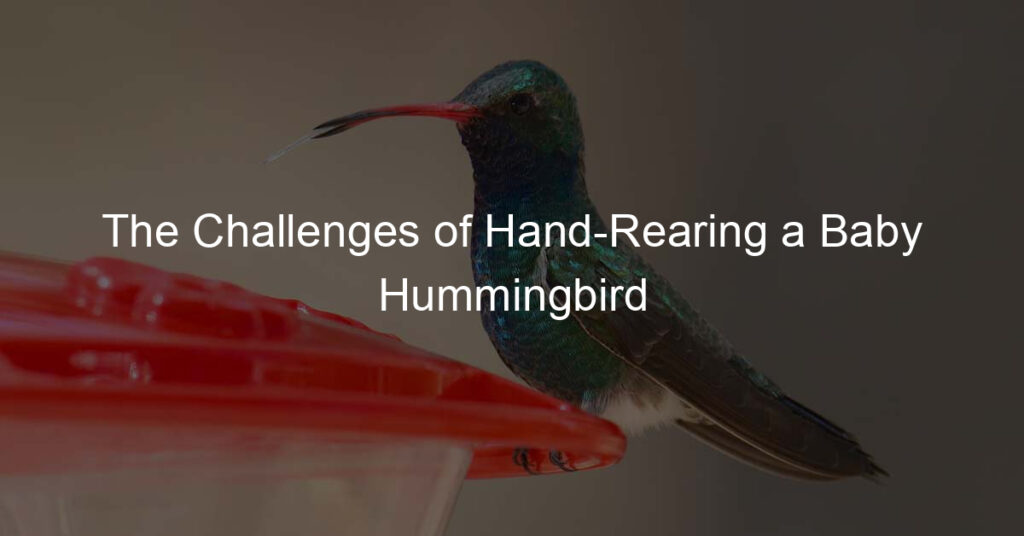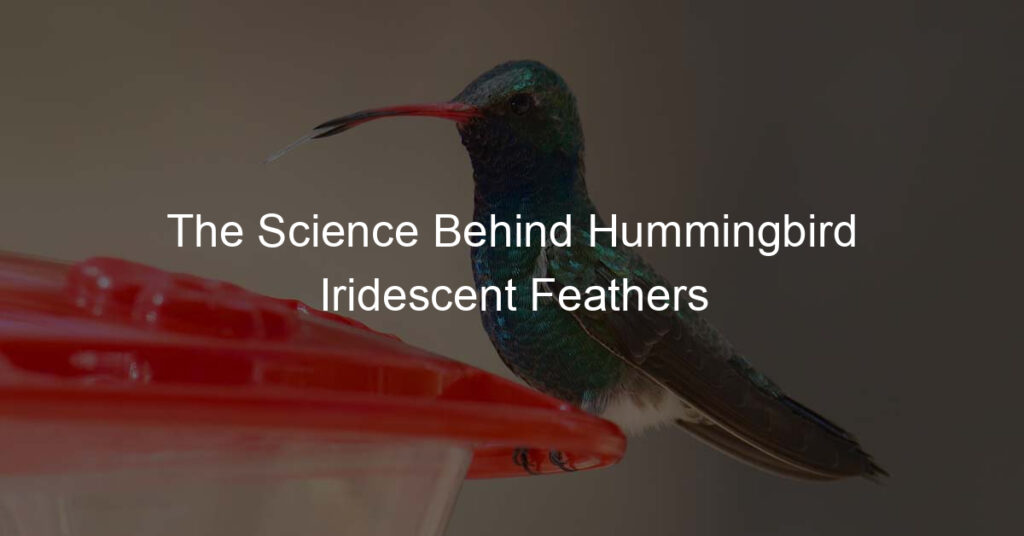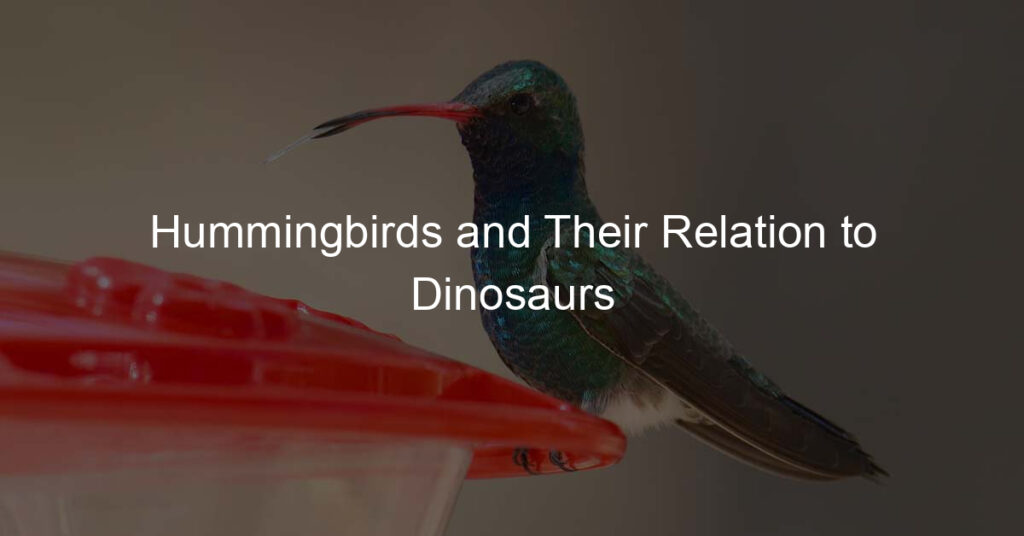Hummingbirds are some of the most fascinating creatures on the planet. With their iridescent feathers, vibrant colors, and small size, these birds have captivated the attention of bird lovers for centuries. But one of the most interesting aspects of hummingbirds is their ability to fly specifically their ability to fly backward! So, can hummingbirds really fly backward? Let’s take a closer look at “Can Hummingbirds fly backwards?”
The Anatomy Of The Hummingbird Wing
Hummingbirds have wings that are specially adapted for their unique way of flying. The shape of the wing is curved on top and flat on the bottom, which is called an airfoil shape. This shape helps create lift when air passes over it. Additionally, hummingbirds have extremely lightweight hollow bones and feathers that help reduce their overall weight, making it easier for them to fly without expending too much energy.
Read more: Can Hummingbird Feeders Go In Dishwashers? (The Ultimate Guide)
Can Hummingbirds Fly Backwards?
Though they may appear to be doing so due to the speed of their forward movement, hummingbirds cannot actually fly backward. Instead, they use a maneuver called “hovering” which allows them to remain in a stationary position for extended periods of time. This maneuver is made possible by their unique wing structure which gives them greater control over how much lift they generate as well as how quickly they can move from side to side or up and down in the air.
The only bird species that are known to be able to fly backward is Anna’s Hummingbird, which is native to North and South America. Birds fly backward by flapping their wings in a figure-eight pattern, allowing them to move in any direction with agility. Modern hummingbirds have large wings compared to their body size, allowing them to fly faster and with more agility than other bird species.
During hovering, hummingbirds can move forward or backward ever so slightly by adjusting the angle at which their wings are held relative to the ground or other objects around them. In other words, although it may seem like hummingbirds are flying backward, they’re actually just adjusting their position slightly while remaining suspended in midair.
Flight Mechanics
Hummingbirds use what’s known as “flapping flight” a method where they beat their wings up and down in an alternating pattern. This type of flight allows them to hover in place, move forward or backward, and even fly upside down! To do this, they must execute highly precise maneuvers with their wings, manipulating them through a series of complex movements that require both muscle power and aerodynamic forces working together in perfect harmony.
The Power Source
Of course, all these amazing feats require a great deal of energy and for that, hummingbirds have adapted yet another specialized feature: their digestive system. Hummingbirds feed continuously throughout the day on nectar from flowers or small insects like aphids or spiders. This gives them an almost constant source of fuel that helps them power through long flights and keep up with their impressive acrobatic displays mid-air.
Learn more: What Are Nectar Guards For Hummingbird Feeders (Plus Ways To Keep The Nectar Safe)
The Maximum Daily Migration Distance Of A Hummingbird
Hummingbirds have incredibly efficient metabolisms and wingspans that allow them to fly faster than other birds. This means that they can cover vast distances in a single day, sometimes up to 500 miles! By taking advantage of thermals and updrafts, hummingbirds can soar high into the sky and save energy as they glide along.
In order to make it through winter, hummingbirds must migrate southward every year. These migrations can last for several weeks, during which time hummingbirds fly hundreds of miles at a time. In fact, some species of hummingbirds will fly non-stop for over 500 miles without stopping for food or rest!
Hummingbirds also use their amazing flying skills to find food sources in their environment. They have an incredible sense of smell and can detect nectar from up to five miles away! This allows them to find food quickly and efficiently while conserving energy by not having to search too far away from their current location.
Read more: What Are Bee Guards For Hummingbird Feeders?
Incredible Flight Facts Of The Hummingbird
While they may be small, hummingbirds are some of the most incredible creatures in the animal kingdom. Their unique ability to hover and fly backward makes them one of nature’s greatest aerial performers. Here are five amazing facts about hummingbird flight that may surprise you!
1. Extremely Fast Flapping
Hummingbirds flap their wings up to 80 times per second in order to stay airborne. This is faster than any other bird or insect species! In fact, a hummingbird can beat its wings as fast as a human can blink—which is why they seem like they’re just hovering in place when they’re really flying around quickly.
2. Amazing Aerodynamics
Hummingbirds have several adaptations that make their flight possible. Their wings are curved like airplane wings and have a unique shape that helps them generate lift. They also have incredibly powerful breast muscles that enable them to flap their wings so quickly and powerfully.
3. Incredible Maneuverability
Not only can hummingbirds fly forward and backward, but they can also hover in place for long periods of time, turn on a dime, and even fly upside down! This is due to the fact that their wings can move independently from each other – something no other bird species can do.
4. Long-Distance Flight
Some species of hummingbirds migrate long distances every year in search of food sources and warmer temperatures, flying hundreds or even thousands of miles without stopping for rest or food! The ruby-throated hummingbird has been recorded flying 500 miles non-stop across the Gulf of Mexico on its migration route between North America and Central America—an incredible feat for such a tiny bird!
5. Unbelievable Energetic Output
In order to keep up with all this amazing flying, hummingbirds must consume more than their own body weight in nectar every day—up to 8 times their weight! To put this into perspective, if you ate 8 times your own body weight every day you would need to eat over 600 pounds of food.
Learn more: When Should The Hummingbird Feeder Be Put Out?
Conclusion
Hummingbirds are incredible creatures that amaze us with their amazing aerial acrobatics. From hovering in place to flying hundreds of miles without stopping, these tiny birds have become some of nature’s most impressive fliers. Their remarkable ability to fly so far and so fast is a testament to the power of evolution—and a reminder that even the tiniest of creatures can be capable of great feats!
Read more: Do Hummingbirds Like Zinnias?

